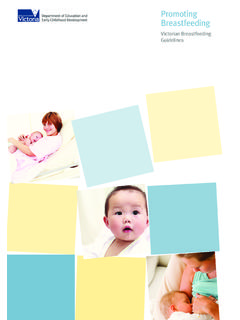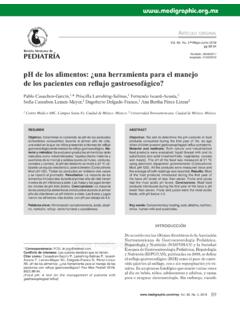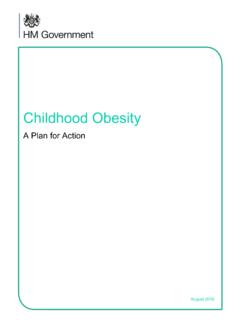Transcription of Parents’(Employment(and(Children’s( Wellbeing
1 Parents Employment and Children s Wellbeing VOL. 24 / NO. 1 / SPRING 2014 121 SummarySince modern welfare reform began in the 1980s, we have seen low-income parents leave the welfare rolls and join the workforce in large numbers. At the same time, the Earned Income Tax Credit has offered a monetary incentive for low-income parents to work. Thus, unlike some of the other two-generation mechanisms discussed in this issue of Future of Children, policies that encourage low-income parents to work are both widespread and well-entrenched in the United States. But parents (and especially mothers ) work, writes Carolyn Heinrich, is not unambiguously ben-eficial for their children. On the one hand, working parents can be positive role models for their children, and, of course, the income they earn can improve their children s lives in many ways. On the other hand, work can impair the developing bond between parents and young children, especially when the parents work long hours or evening and night shifts.
2 The stress that parents bring home from their jobs can detract from their parenting skills, undermine the atmosphere in the home, and thereby introduce stress into children s lives. Unfortunately, it is low-income parents who are most likely to work in stressful, low-quality jobs that feature low pay, little autonomy, inflexible hours, and few or no benefits. And low-income children whose parents are working are more likely to be placed in inadequate child care or to go unsupervised. Two-generation approaches, Heinrich writes, could maximize the benefits and minimize the detriments of parents work by expanding workplace flexibility, and especially by mandating enough paid leave so that mothers can breastfeed and form close bonds with their infants; by helping parents place their children in high-quality child care; and by helping low-income parents train for, find, and keep a well-paying job with J.
3 Heinrich is the Sid Richardson Professor of Public Affairs, an affiliated professor of economics and the director of the Center for Health and Social Policy at the Lyndon B. Johnson School of Public Affairs, University of Texas at Employment and Children s Wellbeing Carolyn J. Heinrich122 T H E F U T U R E O F C H I L D R E N Carolyn J. HeinrichDecades ago, highly regarded economists such as John Maynard Keynes predicted that technological advances would reduce the number of hours Americans worked by one-half to It was also anticipated that we would enjoy three times the number of vaca-tion days, allowing more time for leisure and to spend with our families. Alas, not only is the 40-hour workweek still standard, but parents are working more hours than ever.
4 In 2011, among million families with children, percent had an employed parent, and in percent of these families, both parents Some economists and historians argue that Americans are working more because they have chosen to consume more, but others suggest that we have to work more to support our families. In fact, women, whose participation in the workforce has been steadily rising, are now the main bread-winners in 40 percent of families, up from 11 percent in and policy changes that affect how much parents work have long been under way. In the 1960s, two-thirds of children had a parent who stayed at home; 40 years later, this was true for only one-third of Public approval of mothers working has grown steadily. A majority of adults (57 percent) now agree that both husbands and wives should contribute to family income, and 75 percent disagree with the idea that women should return to traditional roles.
5 5 Indeed, public policies have increased both expectations that parents will work and incentives for them to do so, particularly among low-income and single-parent families. Before 1979, women who received welfare were not expected to work if they had chil-dren under 16. Work requirements were then tightened, and by 1988, women with children older than two were expected to work if they received public assistance. Finally, Congress passed the Personal Responsibility and Work Opportunities Reconciliation Act of 1996 (PRWORA), which aimed to end depen-dence on government benefits by promoting job preparation, work, and marriage. Under PRWORA, states may exempt parents with children under age one from work require-ments but are not obligated to exempt any parent who receives cash tightening of work mandates under welfare reform, along with greater incentives to work from successive expansions of the Earned Income Tax Credit (EITC), roused a public debate about whether parents employ-ment might enhance or harm their children s Wellbeing .
6 People on one side stressed the expected benefits of parents work, including positive role models for children, higher self-esteem and a sense of control among working mothers, more productive family routines, and higher earnings. Others saw possible negative consequences, such as increased stress on parents, children placed in unsafe or unsuitable child care, and less monitoring of older Many researchers have sought to use variations in the ways policies have been implemented over time and across states to shed light on the relationship between par-ents work and children s Wellbeing , particu-larly for lower-income families. If more parents are working, what are the implications for their children s Wellbeing ? In this article, I investigate the pathways through which parents employment affects their children, and I evaluate the evidence on the effects of parents work.
7 I then consider public policies intended to moderate the detrimental effects of parents work and enhance the posi-tive ones. Among the important findings: Parents Employment and Children s Wellbeing VOL. 24 / NO. 1 / SPRING 2014 123 Although policies create strong incentives for parents to work and provide additional income support for low-earning parents that is beneficial to children, they are less effective in ensuring that chil-dren whose parents work have access to appropriate and stimulating early care environments. A preponderance of evidence shows that most children benefit if their mothers are their primary caregivers during their first year of life, and recent studies suggest that paid or partially paid leave of six weeks to six months would encourage more mothers to delay their return to work and breast -feed their children longer.
8 Of people surveyed in 2009 agreed that mothers with young children should work full-time, including only 13 percent of moth-ers with young children who were working full-time themselves. In fact, the first year of a child s life is when mothers are least likely to work full-time or to work at The fact that people are more concerned about how mothers work affects young children mirrors the findings of research in developmental psychology and neurobiology, which suggest that some periods of early childhood are particularly critical or sensitive for a child s brain development and long-term physical and mental Parents Work Can Decrease Children s Wellbeing For some time, neurological research has told us that an infant s brain blossoms with new connections (that is, synapses) following birth, and that the rate at which these connections develop and are later pruned can be strongly influenced by the infant s early Research on the healthy development of chil-dren consistently shows that children need stable family relationships, with adults who are responsive, nurturing, and protective; physically safe environments that allow them to explore without risk or fear of harm.
9 And adequate nutrition and health Focusing on mothers, one way that a mother s work might directly influence her child s development is through its effect on her abil-ity to form a bond with her infant that pro-motes the child s security and attachment, as well as her ability to care for the child respon-sively and For example, if a mother s work requires frequent or long sepa-rations from her child, their bonding could be impeded although many other factors could affect the outcome, such as the quality of the Research finds that low-quality jobs (for example, those with low pay, irregular hours, or few or no benefits) are linked with higher work-related stress for parents, which in turn detracts from children s well-being. The effects of parents work-related stress on children are particularly strong for single-mother families. Presently, the parents whose work is most likely to have negative effects on their children are the same parents who are least able to take leave, cut their paid work hours, or otherwise secure the resources they need to provide for their children s Wellbeing .
10 As a nation, we could do more (possibly by simplifying federal tax provisions) to encourage employers to offer benefits such as paid sick leave, which enhance job quality and help parents balance work with the needs of their children. How Parents Employment Affects Children s WellbeingThe broad societal support for women in the workforce does not necessarily hold true for mothers with young children. Only 12 percent 124 T H E F U T U R E O F C H I L D R E N Carolyn J. Heinrichcaregiver who substitutes for the mother or the mother s job-related stress. There are also varying perspectives regarding when mater-nal employment is more likely to affect the bonding process between mother and child. Some research suggests that a mother s return to work after their attachment is secure (rather than earlier in the bonding process) could be more disruptive to the a mother returns to work may also affect how long she breastfeeds her infant or whether she starts breastfeeding at all.
















